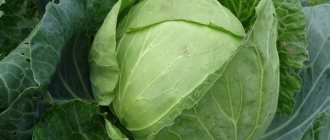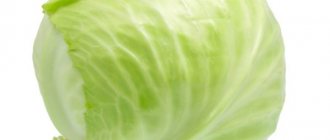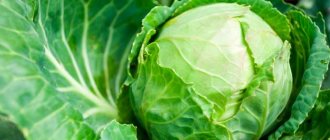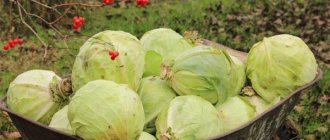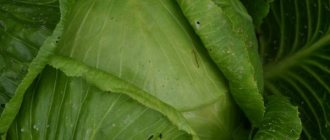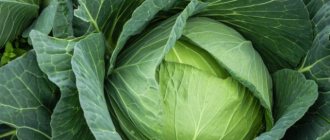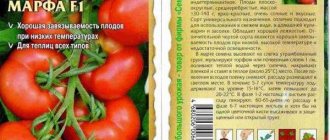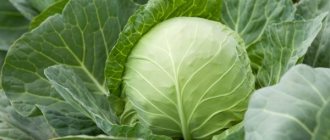Watering
First, the seeds are placed in well-moistened soil. Subsequent watering of seedlings should be carried out only if urgently necessary, when the top of the soil is slightly dry. In order not to overdo it with irrigation, it is necessary to maintain the golden mean.
Slightly elongated cabbage requires even more water to gain weight. It is necessary to irrigate frequently and a lot with warm water. The main waterings should occur in the evening, when the heat subsides. If you water during rush hour, when the sun is shining relentlessly, the water will drain faster. The root of the leaves will dry out, and the cabbage may spoil in a short time.
About
Advantages and disadvantages of vegetables
Galaxy, despite the fact that it is a Dutch variety, is not particularly popular in the Russian markets. The thing is that there are already good late varieties on the market, which are incredibly difficult to compete with. However, Galaxy can be considered as the main late-maturing variety for growing both at home and for commercial purposes, due to its many advantages. In particular, Galaxy has the following positive qualities:
- Good taste of both fresh and processed vegetables.
- Versatility.
- Cabbage has quite good immunity, protecting it not only from diseases, but also from insect attacks.
- “Heads” can be grown weighing up to 6 kg.
- The harvest occurs smoothly, which is a huge advantage when growing vegetables commercially.
- Thanks to the dense heads of cabbage, they are not damaged during transportation.
- Heads of cabbage are stored in the cellar for a very long time, about 4-5 months.
As for the disadvantages, the Dutch hybrid has no serious disadvantages.
Insects and diseases
Diseases that can be dangerous for Galaxy cabbage:
- Kila. To eliminate it, you need to add formalin to the water, stir, treat the leaves with the solution, and dispose of the diseased inflorescences.
- White rot. To prevent this disease from occurring, it is necessary to use fertilizing. It is also important to follow the rules of crop rotation.
- Blackleg. The drug Fitosporin is used, which quickly eliminates the fungus that provokes the occurrence of pathology.
- Gray rot. This problem occurs during storage. The barn or cellar should be well ventilated, and the walls should be covered with bleach.
Among the insects, the most dangerous are:
- White fly, cutworm, cabbage fly. The soil should be covered with a mixture of mothballs and sand as a preventive measure. If insects do appear, then it is necessary to treat with a dust mixture.
- Cruciferous flea beetle. It can be removed with ground pepper or tobacco smoke.
- Aphid. To eradicate it, special means or an infusion of tobacco dust are used.
Reviews of Galaxy F1 cabbage
On the Internet you will find a huge number of positive responses from gardeners about this unique variety. Some people are ready to share the good news about receiving a rich and healthy harvest, but for others this variety is simply not suitable. Let's look at the reviews about Galaxy F1 cabbage:
My wife and I cultivate the Galaxy variety every year. The heads turn out juicy, crispy and tasty. It is not difficult to care for the variety; it is only important to follow crop rotation and water in moderation. My wife loves to make starters from this cabbage and also freeze it for the winter. The vegetable turns out very tasty.
About
Description and characteristics
Galaxy cabbage has a number of attractive characteristics. Before cultivating a variety, you should carefully study them in order to be able to correctly organize work on the site during the season.
Appearance of cabbage
The stem (stalk) is tall and leafy. The leaf blades located at the bottom of the stem are fleshy and large. The shape is lyre-shaped, pinnately dissected. The veins on the leaves are thickened, prominent, and clearly visible.
The leaf plates are densely located around the stalk, forming a head of cabbage with their mass. The upper ones are sessile, the lower ones are stem-embracing. The heads of cabbage have a rounded-flat shape. Very dense. The outside of the fruit is dark green, the inside is yellow-white. Depending on the growing region and conditions, the weight of the head of cabbage varies between 3.2–4.6 kg; with improved care, it is possible to obtain even specimens weighing 6 kg. The total yield per m² ranges from 4.6 to 6.5 kg.
The products have a high commercial value. It tolerates transportation well and has a long shelf life - up to 12 months. It is characterized by high taste and resistance to cracking.
Did you know? Sour cabbage soup
—
This is not the first course. In Tsarist Russia, this was the name given to a spicy drink made from cabbage, which tasted like kvass.
Ripening time and frost resistance
The variety belongs to late-ripening crops. Ripens in 160–175 days from the moment of germination. Mature plants can withstand frosts ranging from -3...-8°C. Seeds begin to germinate already at +3°C. Hardened seedlings can tolerate short-term drops in temperature down to -7°C even on the day of planting. The optimal regime for the growth and development of the crop is +18…+21°С. Plants are tolerant to damage by thrips and Alternaria.
Video: Galaxy cabbage
Description of cabbage variety Galaxy F1
High-quality late-ripening hybrids are always in price.
They are stored for a long time, they can be processed (in particular, fermented). Among the good Dutch late-ripening hybrids, it is worth noting the Galaxy F1 variety, developed by the Royal sluis company. This variety is primarily valued due to the resistance of the heads of cabbage to cracking and excellent commercial qualities. In 1993, cabbage was included in the State Register of the Russian Federation and recommended for cultivation in the following regions of our country:
In today's publication you will find a description of the Galaxy F1 cabbage variety, photos and reviews from summer residents about this hybrid form of cabbage.
How to plant?
Galaxy cabbage shows good results when planted as seedlings. Embedding into the ground is carried out when the air temperature reaches 15 C. In some regions it becomes warm in mid-May. The duration of growing seedlings is 35-45 days.
Sowing is carried out in early April or late March. The seedlings are ready for planting if they have 4 leaves, the stem is strong, has risen 15 cm, and the root is well formed.
Seedlings are grown in greenhouse conditions. It requires maintaining a certain microclimate. It varies depending on the growing season. Gardeners recommend preparing the soil from humus and sawdust. For 6 kg of compost, 500 g of sawdust.
To avoid the development of fungus, add ash to the soil mixture: 1 kg/kg. Before sowing, the soil is irrigated with a solution of potassium permanganate or hydrogen peroxide. Soil temperature for planting seeds 25 C:
- the seed is kept in an oven at a temperature of 50 C for 4 hours. Heat treatment is carried out to avoid the development of mold and pathogenic bacteria;
- You can additionally soak the seeds in the “Shine-1” solution. A solution of table salt is used as a growth stimulator;
- plant the seeds to a depth of 1 cm. Sprinkle with prepared soil mixture. Cover with film. Maturing temperature is 25 C. Sprouts appear on the 5th day;
- later the film is removed, the air temperature and daylight hours are adjusted;
- install a fluorescent lamp. Day length 12-15 hours;
- daytime temperature is reduced to 15-18 C, night temperature to 6-8 C. If the seedlings begin to stretch without gaining weight, then daylight hours are reduced;
- I keep the soil moist; the dry earth crust is destroyed by aerating the soil.
For sowing, it is recommended to purchase plastic containers or peat cups. Before planting cabbage in the ground, the walls of the peat cups are cut so that the roots can spread out faster and germinate in the soil.
View this post on Instagram
Posted by Victor (@viktora_ydacha)Nov 7, 2021 at 5:23 PST
In plastic containers, the soil is moistened so that the bush can be removed without damaging the roots. Before planting in an open area, plants are adapted to low air temperatures. They take them out to the garden.
More on the topic: What care does Spitz cabbage require?
The soil needs to be prepared in the fall. Humus, ash, and insect repellents are added to the site. 2 weeks before planting, urea or superphosphate is added to the site and harrowing is carried out. The wells are prepared according to the scheme specified by the manufacturer. Cabbage Galaxy F1 spreading.
Reviews from plant growers indicate that it requires a lot of space on the site. Otherwise, a fungus may develop on the soil, which provokes cabbage clubroot, mucous or vascular bacteriosis.
Before planting cabbage in open ground, it is recommended to treat the roots of the seedlings with the preparation “Siyanie-1” or “Immunocytophyte”. These products prevent the development of fungus and reduce the risk of cabbage clubroot forming on the roots. If seedlings are grown in peat cups, then they are fertilized with these preparations.
The seedlings are deepened by 10 cm. Only leaves are left above the soil. You can add ash and 5 g of nitrate fertilizer, ammonium nitrate or urea into the hole. Plants are covered with earth on all sides. Many gardeners water immediately. Use warm water, soil temperatures.
Landing
The seeds of the hybrid undergo industrial processing and can be planted without disinfectant or stimulating manipulations. Soaking is enough.
Planting density in field conditions is 30-35 thousand plants per 1 hectare.
Seeds are sown from the beginning of April. For seedlings, containers with a wall height of 10 cm are used. The containers are filled with store-bought or self-prepared soil. The optimal composition includes:
- 2 parts of turf;
- 2 parts compost;
- 1 part sand;
- 1 part peat.
Add 1 tbsp per 10 kg of soil. ash and 40-50 g of phosphorus-potassium fertilizer.
How to care for seedlings:
- water with warm water;
- keep under film until germination;
- Feed once;
- dive.
Properties of cabbage
As noted in the introduction of the article, Galaxy F1 is a late-ripening hybrid. The growing season lasts 160-175 days from emergence. The harvest is formed uniformly, which is a huge advantage when growing vegetables commercially.
The productivity is quite high. Depending on the region of cultivation and the conditions provided to the crop, from 1 m2 you can collect from 4.5 kg to 6.5 kg of high-quality commercial products.
The “heads” of the Dutch vegetable grow into good ones. In good conditions, you can safely grow a “head” weighing up to 6 kg. Under normal home conditions, heads of cabbage most often grow weighing from 3.2 to 4.6 kg. The shape of the “head” is flat-round, the external color is dark green. In cross section it is yellow-white in color. The taste can be described as very good.
Reviews from gardeners
Valentina Ivanovna, Moscow, 53 years old.
Last year I grew 2 varieties for storage, SB-3 and Galaxy. In general, cabbage is edible, you can ferment it, but the heads of cabbage are too small for me, I would like late cabbage with larger heads.
Ivan Ivanovich, Kharkov, 45 years old.
I used to often grow this cabbage, but now I’ve switched to other late hybrids. I grew it mainly to be stored in the cellar in winter. It can be stored for about 8-9 months, which is quite a long time. The taste is good, although not without its shortcomings. Like many late varieties, Galaxy's leaves are not very soft, rather harsh. The cabbage rolls will not be very good, but they are good for pickling. To grow or not? Yes. But if you search the market, you can find slightly better late hybrids.
